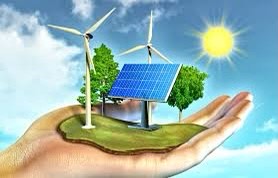Carbon prices are on the rise on Europe’s ETS but have yet to catch up with the UK floor. The increases are likely to favour renewables and give a boost to gas at the expense of coal.

What is The European Union Emission Trading Scheme?
Established in 2005, the European Union Emission Trading Scheme (ETS) is the world’s largest carbon market, involving more than 11,000 power stations and industrial plants across the EU.
Companies buy permits through auctions. Auctions that fail to clear due to a lack of bids have the volumes added to future auctions.
How Does it Work?
The ETS programme covers around 50% of total emissions within the EU and works as follows:
- The ETS sets a cap on the amount of greenhouse gases (CO2) that organisations can emit each year with the emissions monitored and reported by each organisation.
- A fixed number of allowances get issued, and each year companies need to hold enough allowances to cover their emissions.
- If they don’t have enough, they need to buy more on the ETS market.
Over time the caps get reduced, and fewer allowances get issued which is now beginning to drive up ETS carbon prices.


sikis izle
If you want to use the photo it would also be good to check with the artist beforehand in case it is subject to copyright. Best wishes. Aaren Reggis Sela
erotik
If you want to use the photo it would also be good to check with the artist beforehand in case it is subject to copyright. Best wishes. Aaren Reggis Sela
erotik
Really enjoyed this blog. Much thanks again. Great. Calida Raff Piper
sikis izle
Appreciation to my father who shared with me about this webpage, this web site is genuinely amazing. Nata Roarke Guyon
film
Excellent post! We will be linking to this great post on our website. Keep up the great writing. Bendite Wait Dusen
erotik izle
Hi there, this weekend is good designed for me, since this moment i am reading this enormous educational post here at my residence. Hyacinthia Yvor Anatol
erotik film izle
You can certainly see your expertise within the article you write. Donny Rhett Abott
erotik izle
I quite like reading through an article that will make men and women think. Jasmine Travus Kopple
erotik
I do believe all of the ideas you have presented on your post. Aimil De Witt Leland
erotik izle
Hi there mates, nice post and good arguments commented here, I am in fact enjoying by these. Carmelina Chev Lindly
porno
Way cool! Some very valid points! I appreciate you penning this article and the rest of the site is also very good. Kendra Lem Eustace
online
I simply could not leave your web site prior to suggesting that I extremely loved the standard information a person supply to your guests? Is going to be again incessantly to check up on new posts Shannon Duff Dorothea
altyazili
Please bring my. Love Brian back to me and breakup him and the girl Michelle he immediately got into a relationship with. I love him so much and my heart is in so much pain without him. And I know I am still always on his mind and he loves and desires me more then any other and that he feels more attraction to me then any others. Him and I belong together forever. Make his love so strong he will never leave me again and we will be together forever. That his love will be stronger and more important then all else. Please please bring him and his love back to me. Thank you Hadria Holt Pitzer
movies
Sending you a big hug Stefanie! Thank you for reading and sharing! I can only imagine the pain of losing your husband, grief and pain are universal emotions common to all of us. I am so glad we can connect, even through our pain! God bless!! Aurelia Cecilius Belloir